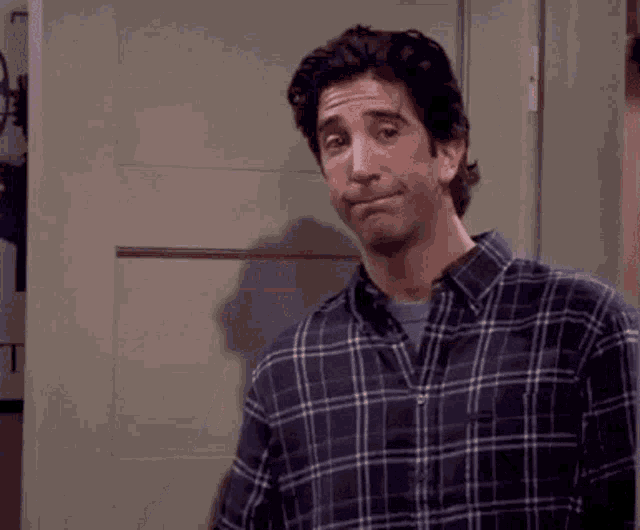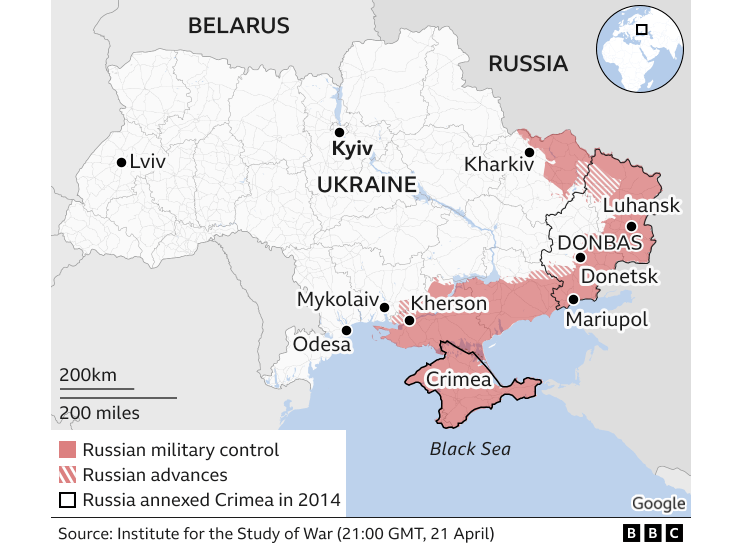The One About the Economy

Image: Friends/Tenor
The US economy shrank at a 1.4% annual rate in Q1, according to Commerce Department figures published yesterday, well below analysts’ expectations of a 1% gain.
🔢 By the numbers... It marks the weakest quarter for US GDP since spring 2020, and a sharp reversal from the 6.9% annual growth rate seen in Q4 2021.
- The US imported far more than it exported last quarter, with trade subtracting 3.2 percentage points from overall GDP growth – a reflection of America having significantly stronger domestic demand compared to the rest of the world.
- Consumer spending, which accounts for more than two-thirds of the economy, rose 2.7% in Q1, while prices increased by 7.8%.
- Consumer spending on goods stayed essentially flat, while services spending rose sharply – a sign that the long-awaited post-pandemic transition away from physical goods is underway, per Axios.
💼 Over in jobland… Jobless claims, a proxy for layoffs, have remained near historic lows for months and fell last week to 180,000, the Labor Department revealed yesterday. The unemployment rate currently stands at 3.6%, nearly back to the half-century low it reached just before the pandemic.
👀 Looking ahead… Fed Chair Jerome Powell has indicated the central bank will likely raise interest rates by a half-percentage point after its meeting next week in an effort to reduce inflation, which hit 8.5% last month (the highest annual rate since 1981).
The 360° view: What's next for the US economy?

From the Left
🚀⏰ Ready, Set, Go: These opinions take 1.98 minutes to read.
“In retrospect, we needed to be lucky. Very lucky… Instead, we were unlucky, and lots of things went wrong.
The U.S. economy shrank at an annual pace of 1.4 percent in the first quarter of 2022, thanks largely to decreases in private inventory investment. Recession risks are rising. Deutsche Bank Research is forecasting a “major” recession by next year, a more dire scenario than its previous call for a “mild” recession… Goldman Sachs and Moody’s Analytics, among others, say there’s about a 1 in 3 chance of recession in the next couple of years.
There are several reasons recession looks more likely than it did just a few months back.
First and foremost: the Federal Reserve’s interest rate policies… Historically, most of the times the Fed has raised interest rates to get inflation under control, it (accidentally) tipped the economy into recession…
Factor No. 2 is the latest round of covid-related lockdowns in major manufacturing hubs across China. The Chinese government has shuttered factories and obstructed shipping of cars, electronics and other key consumer products. This will cause shortages and price spikes, increasing inflationary pressures and consumers’ expectations for more inflation in the months ahead.
Then there’s factor No. 3: the war in Ukraine. In addition to the immediate, unconscionable losses of Ukrainian lives and freedom, the conflict has also led to major disruptions in energy and food markets worldwide. Oil and natural gas prices have skyrocketed, visiting immediate pain upon the United States and especially Europe. The consequences for food prices are broader, and have not yet been fully felt…
Then, finally, factor No. 4: The myriad smaller shocks affecting food prices, including the avian flu, drought in California and self-sabotaging border theatrics in Texas…
Recession is not inevitable. But the outlook is darkening — first because of some poor decisions, and then because of a spate of really awful luck.”
“Where are we right now? Inflation is, of course, unacceptably high. Some of this reflects disruptions — supply-chain problems, surging food and energy prices from the war in Ukraine — that are likely to fade away over time. In fact, I’d argue that these temporary factors account for a majority of inflation, which is why just about every major economy is experiencing its highest inflation rate in decades.
But inflation, which used to be mainly confined to a few sectors strongly affected by the pandemic, has broadened. So I find myself in reluctant agreement with economists asserting that the U.S. economy is overheated — that overall demand exceeds productive capacity and that the two need to be brought in line.
The good news is that there’s essentially no evidence that inflation has become entrenched — that we’re in the situation we were in circa 1980, when inflation persisted simply because everyone expected it to persist. Every measure I can find shows that people expect high inflation for the next year but much lower inflation over the medium term, indicating that Americans still view low inflation as the norm. The fact that inflation is not yet entrenched offers the possibility of a soft landing…
What I’d argue is that there is a path through this difficult moment that needn’t involve a recession. And while the Fed can get it wrong — and will almost surely get it wrong to some degree, because these are tricky times — it can get things wrong in either direction. Right now I am, if anything, worried that the Fed is overreacting to inflation. But time will tell.”

From the Right
🚀⏰ Ready, Set, Go: These opinions take 1.92 minutes to read.
“Workers have substantial power because there have been relatively few of them when measured against employers’ needs. In the six months prior to the pandemic’s onset in March 2020, there were an average of 7.1 million job openings each month. Over the past six months, there have been an average of 11.1 million vacancies—a 56% increase…
Yet workers won’t continue to enjoy so much bargaining power, for four reasons. First, the “great resignation” was overhyped. Workers have been quitting their jobs more than usual, but the hiring rate has been increasing as well. Instead of a great resignation, we have been seeing upward mobility…
Second, workers are finally coming off the sidelines and back into the job market. The virus’s fading has made child care more reliable and lessened concerns about getting sick. Pandemic-era stimulus programs that may have kept workers on the sidelines have ended…
Third, productivity has been increasing. After adjusting for inflation, economic output was 2% greater in 2021 than in 2019, but there were nearly 2% fewer workers at the end of 2021 than at the end of 2019. Businesses have figured out how to produce with fewer workers. Given this, when today’s white-hot consumer demand cools off, businesses may reduce headcount more than they would have in earlier times.
Fourth, consumer demand will cool. The tight labor market that gives workers so much power is a symptom of an economy that is running too hot. High and rising prices will eventually reduce consumer demand for goods and services, which in turn will find businesses with less of a reason to compete so fiercely to attract and retain workers…
The risk of recession shows the importance of fiscal and monetary policy that aims for a rate of economic growth that is sustainable over the longer-term rather than allowing excessive short-term growth.”
“Democrats want to "undo" former President Donald Trump’s tax cuts. At the time they were passed, Democrats falsely claimed that the Tax Cuts and Jobs Act would only benefit the wealthy… As every objective observer recognized at the time, the Trump tax cuts have benefited all income groups.
Specifically, IRS data show the Trump tax cuts reduced average effective income tax rates for taxpayers in every bracket, with the largest reduction in rates going to lower- and middle-income households…
In other words, the Trump tax cuts were quite progressive. They reduced the share of federal taxes paid by the poorest households while increasing the share paid by the wealthiest households. And now Democrats want to repeal these tax cuts — to raise rates on everyone and increase the share of taxes paid by the poorest households?
That doesn’t seem politically wise nor does it seem advisable to erase the debts owed by college and graduate school borrowers. According to the Committee for a Responsible Federal Budget, the lowest quintile of earners pays just 2% of all student loan payments each month, while the highest-earning quintile pays almost 40%. Canceling these payments would be a huge cash infusion for the wealthy and privileged and a massive new driver of inflation eroding everyone else's savings…
The U.S. economy is already teetering on the brink of recession. The last thing it needs is a massive regressive tax hike coupled with an inflationary bailout of the wealthy. Unfortunately, that is exactly what the Biden Democrats want to do.”
Share this!
Recent Discussion stories
Discussion
| April 27, 2022The First Amendment & Religious Freedom
⚖️ The Supreme Court on Monday heard arguments in a case centered around a Washington state public high school football coach who would kneel in prayer at the 50-yard line after each game.

Discussion
| April 25, 2022Today’s Russia/Ukraine Update
🇺🇦 On Friday, Russia's military said it wants to seize all of the Donbas region and southern Ukraine – as far as south as Moldova – to form a land bridge to Crimea as part of "the second stage" of its invasion.
Discussion
| April 22, 2022Mask On, Mask Off: Which Is It?
⚖️😷 The CDC asked the Justice Department this week to appeal a ruling that lifted the agency’s mandate requiring masks on planes, trains, and other forms of public transportation.
You've made it this far...
Let's make our relationship official, no 💍 or elaborate proposal required. Learn and stay entertained, for free.👇
All of our news is 100% free and you can unsubscribe anytime; the quiz takes ~10 seconds to complete